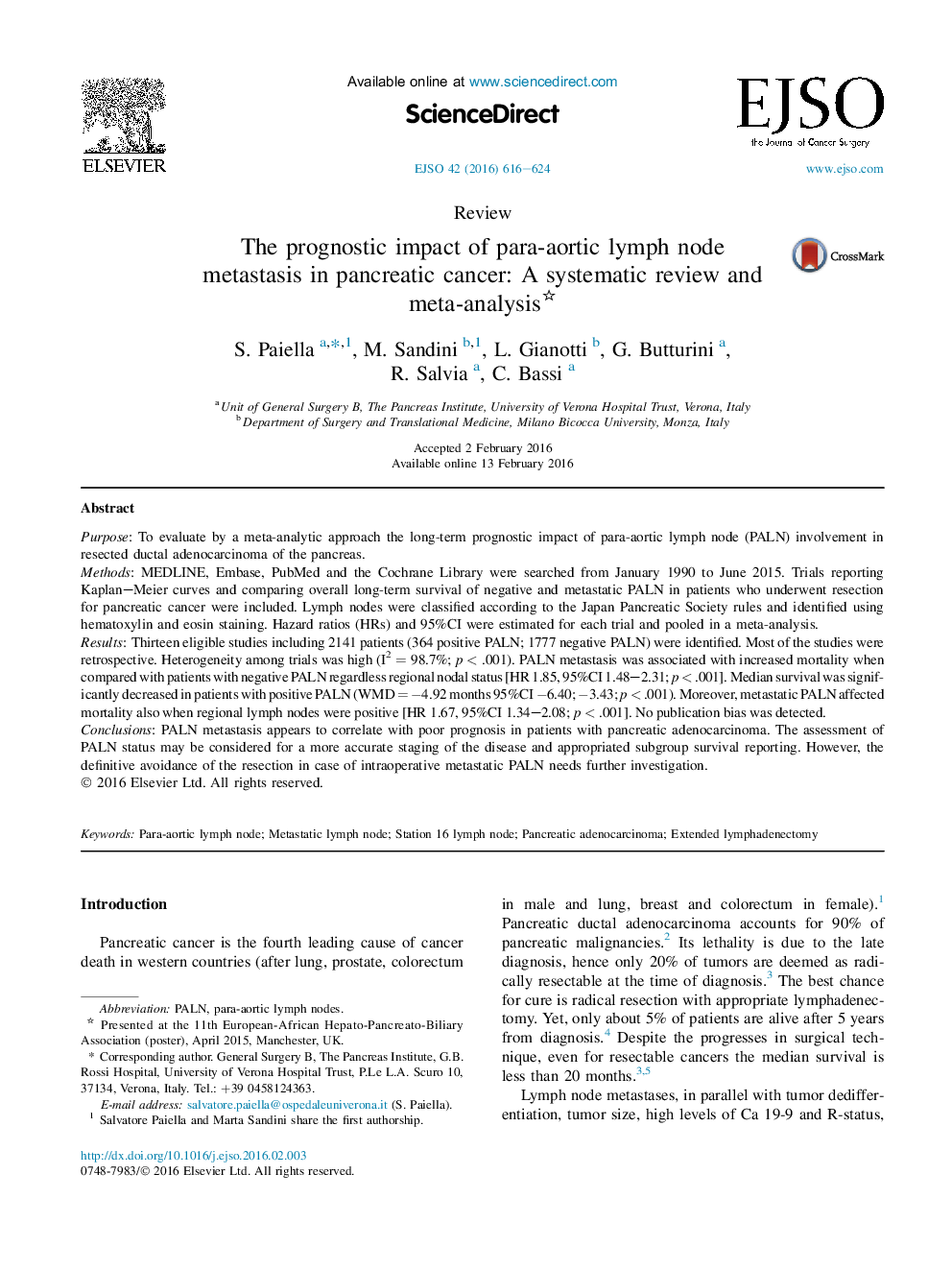| Article ID | Journal | Published Year | Pages | File Type |
|---|---|---|---|---|
| 6191243 | European Journal of Surgical Oncology (EJSO) | 2016 | 9 Pages |
PurposeTo evaluate by a meta-analytic approach the long-term prognostic impact of para-aortic lymph node (PALN) involvement in resected ductal adenocarcinoma of the pancreas.MethodsMEDLINE, Embase, PubMed and the Cochrane Library were searched from January 1990 to June 2015. Trials reporting Kaplan-Meier curves and comparing overall long-term survival of negative and metastatic PALN in patients who underwent resection for pancreatic cancer were included. Lymph nodes were classified according to the Japan Pancreatic Society rules and identified using hematoxylin and eosin staining. Hazard ratios (HRs) and 95%CI were estimated for each trial and pooled in a meta-analysis.ResultsThirteen eligible studies including 2141 patients (364 positive PALN; 1777 negative PALN) were identified. Most of the studies were retrospective. Heterogeneity among trials was high (I2 = 98.7%; p < .001). PALN metastasis was associated with increased mortality when compared with patients with negative PALN regardless regional nodal status [HR 1.85, 95%CI 1.48-2.31; p < .001]. Median survival was significantly decreased in patients with positive PALN (WMD = â4.92 months 95%CI â6.40; â3.43; p < .001). Moreover, metastatic PALN affected mortality also when regional lymph nodes were positive [HR 1.67, 95%CI 1.34-2.08; p < .001]. No publication bias was detected.ConclusionsPALN metastasis appears to correlate with poor prognosis in patients with pancreatic adenocarcinoma. The assessment of PALN status may be considered for a more accurate staging of the disease and appropriated subgroup survival reporting. However, the definitive avoidance of the resection in case of intraoperative metastatic PALN needs further investigation.
